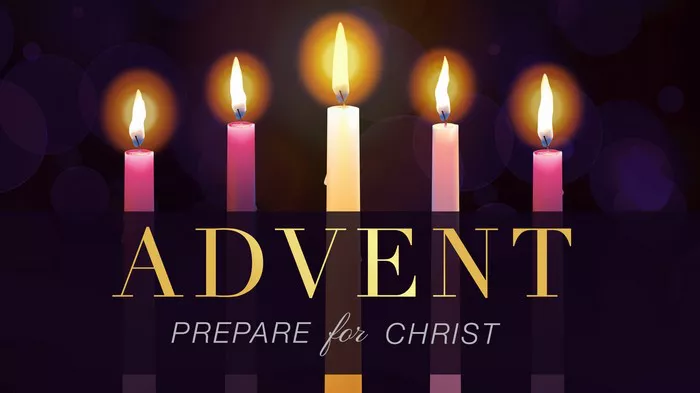In the bustling season of Advent, a symbol of profound significance graces many homes, churches, and communities—the Advent wreath. Amidst the holiday rush, the Advent wreath stands as a timeless emblem, rich in meaning and tradition. This article delves into the deep-rooted symbolism encapsulated within the Advent wreath, shedding light on its historical origins, its theological implications, and its contemporary relevance.
Historical Origins: Tracing the Roots
To comprehend the symbolism of the Advent wreath, one must journey back through the annals of time, tracing its origins to pre-Christian traditions. Evergreen wreaths, symbolizing life amid winter’s dormancy, were utilized by ancient civilizations such as the Romans and Celts. With the advent of Christianity, these wreaths evolved into potent symbols of hope and renewal, intertwined with the narrative of Advent.
The earliest recorded use of the Advent wreath dates back to 16th-century Germany, where it served as a visual aid for families to countdown the weeks leading to Christmas. Initially comprising a simple wreath of evergreen branches, its form gradually evolved to incorporate candles, each representing a different aspect of the Advent journey.
Symbolic Elements: Decoding the Components
Central to the Advent wreath are its four candles, typically arranged in a circle atop a bed of evergreen foliage. Each candle holds unique symbolism, progressively illuminated on successive Sundays throughout Advent.
The First Candle: Hope (Purple)
The first candle, often referred to as the Prophet’s Candle, symbolizes hope. Its purple hue reflects the penitential nature of Advent, inviting believers to prepare their hearts for the coming of Christ. This candle heralds the anticipation of the Messiah, echoing the longing of prophets and patriarchs for the fulfillment of God’s promises.
The Second Candle: Peace (Purple)
The second candle, known as the Bethlehem Candle or the Candle of Peace, embodies the tranquility promised by the arrival of Christ. Its purple color signifies repentance and preparation, reminding believers of the need to reconcile with God and one another. As the light of peace shines forth, it beckons humanity to embrace harmony and goodwill in anticipation of the Prince of Peace.
The Third Candle: Joy (Pink)
The third candle, distinguished by its pink hue, symbolizes joy. Referred to as the Shepherd’s Candle or the Candle of Joy, it marks a moment of rejoicing amidst the somber tones of Advent. As the halfway point of the season approaches, this candle serves as a beacon of encouragement, inviting believers to exult in the imminent arrival of Christ, the source of everlasting joy.
The Fourth Candle: Love (Purple)
The fourth candle, often termed the Angel’s Candle or the Candle of Love, epitomizes the boundless love of God manifested through the incarnation. Its purple color underscores the essence of Advent as a season of preparation and reflection. As the culmination of the Advent journey draws near, this candle illuminates the profound truth that God’s love knows no bounds, transcending time and space to dwell among humanity.
The Fifth Candle: Christ (White)
In some traditions, a fifth candle, positioned at the center of the wreath, is lit on Christmas Day. This white candle, emblematic of Christ, radiates pure light, symbolizing the culmination of the Advent season with the birth of the Savior. As its flame dances atop the wreath, it serves as a poignant reminder of the incarnation—the pivotal moment when divinity intersected with humanity, ushering in a new era of salvation and redemption.
Theological Significance: Reflecting on Redemption
Beyond its aesthetic appeal, the Advent wreath carries profound theological significance, encapsulating the overarching narrative of redemption woven throughout scripture. Each candle illuminates a different facet of the Advent journey, inviting believers to engage in a season of introspection, anticipation, and ultimately, celebration.
The progression from hope to peace, joy, and love mirrors the unfolding revelation of God’s redemptive plan. In the advent of Christ, humanity finds the fulfillment of ancient prophecies, the embodiment of divine peace, the source of unending joy, and the epitome of sacrificial love. Thus, the Advent wreath serves as a tangible expression of the Incarnation—a tangible reminder of God’s steadfast presence amidst the ebb and flow of human history.
Contemporary Relevance: Navigating the Advent Journey
In an era marked by haste and distraction, the Advent wreath emerges as a countercultural symbol, inviting individuals and communities to pause, reflect, and realign their priorities. Amidst the frenzy of holiday preparations, it beckons believers to carve out sacred space for prayer, meditation, and spiritual renewal.
Furthermore, the communal aspect of the Advent wreath fosters a sense of solidarity and unity among believers, as families and congregations gather to partake in the weekly rituals of lighting candles, singing hymns, and sharing reflections. In a world fragmented by division and discord, the Advent wreath serves as a beacon of hope, peace, joy, and love—a testament to the enduring promise of Emmanuel, God with us.
Conclusion
In conclusion, the Advent wreath stands as a timeless symbol of faith, encapsulating the profound mystery of the Incarnation and the enduring promise of redemption. Rooted in ancient tradition yet resonant with contemporary relevance, it serves as a beacon of hope amidst the darkness, a harbinger of peace amid turmoil, a source of joy amid sorrow, and a testament to the boundless love of God.
As believers journey through the sacred season of Advent, may the light of the wreath illumine their hearts and minds, guiding them ever closer to the manger where Christ, the incarnate Word, lies cradled in humility and grace. In the words of the prophet Isaiah, “The people walking in darkness have seen a great light; on those living in the land of deep darkness a light has dawned” (Isaiah 9:2, NIV). Indeed, may the light of the Advent wreath continue to shine forth, illuminating the path of faith for generations to come.

